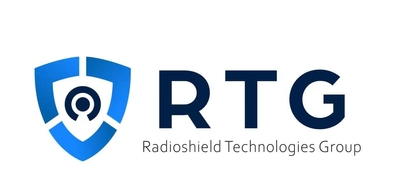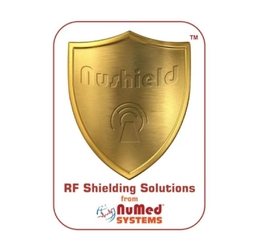すべての製品
-
 Ana真鍮の蜜蜂の巣の出口は非常にニースに見る
Ana真鍮の蜜蜂の巣の出口は非常にニースに見る -
 SatheeshMRI/RFのドアはハンドルによって照っている、私の友人ありがとう。
SatheeshMRI/RFのドアはハンドルによって照っている、私の友人ありがとう。
GMP Standard Synthesis Hot Cell for Radiopharmaceutical Production Line with Class A B C Cleanliness and 10mmpb 20mmpb 50mmPb 100mmPb Lead Equivalent

試供品およびクーポンのための私に連絡しなさい。
whatsapp:0086 18588475571
Wechat: 0086 18588475571
Skype: sales10@aixton.com
心配があれば、私達は24時間のオンライン・ヘルプを提供する。
x商品の詳細
| 清潔さ | クラスABC | リード相当 | 10mmpb 20mmpb 50mmpb 100mmpb |
|---|---|---|---|
| 材料 | ステンレス鋼構造、鉛レンガ | 操作システム | 人工知能制御 |
| 精製方法 | アクティブカーボンフィルター、HEPAろ過、 | 消毒方法 | 紫外線とオゾン |
| 代替オプション | 手動ディスペンサー、自動ディスペンサー | 製品名 | 放射性医薬品生産ラインGMP標準の合成ホットセル |
| ハイライト | GMP Standard Synthesis Hot Cell,Real Time Dose Monitoring Hot Cell,HEPA Filtration Radiopharmaceutical Production Hot Cell |
||
製品の説明
Synthesis Hot Cell For Radiopharmaceutical Production Line GMP Standard With In Real Time Dose Monitoring With Hepa Filtration Active Carbon Filter Negative Pressure
Key Characteristics of Radiopharmaceutical Synthesis Hot Cells
The synthesis hot cell (also known as a synthesis shielding box or hot cell) serves as the core equipment in radiopharmaceutical production processes. Its design ensures operator safety, environmental protection, and product integrity with these essential features:
1. Radiation Shielding
The most critical safety feature, providing effective shielding against high-energy gamma rays or neutrons emitted by radionuclides.
- Materials: High-density lead (Pb) bricks/plates as primary shielding, complemented by lead glass (viewing windows) and steel (structural support)
- Thickness: Precisely calculated based on radionuclide type (F-18, Ga-68, Lu-177) and activity levels, ranging from centimeters to tens of centimeters to maintain external radiation below 2.5 μSv/h
2. Containment, Negative Pressure & HEPA Filtration
- Containment: Hermetically sealed system prevents radioactive aerosol/volatile substance leakage
- Negative Pressure System: Maintains lower internal pressure than surrounding environment, ensuring inward airflow to contain contaminants
- HEPA Filtration: Multi-stage High-Efficiency Particulate Air filters capture radioactive particles, with activated carbon filters for volatile radionuclides (e.g., I-131)
3. Remote Manipulation & Automation
Advanced systems eliminate direct operator contact with radioactive materials:
- Manipulators: Master-slave systems or electric-powered units controlled via joysticks/touchscreens
- Full Automation: Computer-controlled synthesizers and Chemical Process Modules (CPM) execute complete synthesis processes (heating, cooling, liquid transfer, purification) with minimal human intervention
4. Product Protection & Aseptic Environment
Ensures radiopharmaceuticals meet sterile, pyrogen-free injection standards:
- Clean Environment: ISO Class 7 or 5 (Grade C/A) cleanliness standards
- Transfer Systems: Dedicated pass-through boxes with interlocking mechanisms and UV decontamination
- Surface Materials: Seamless, cleanable stainless steel resistant to frequent disinfection
5. Shielding Viewing Window
Multi-layered lead glass windows provide visibility while maintaining equivalent radiation shielding to surrounding walls.
6. Utilities Integration
Comprehensive support systems for production processes:
| Utility | Function |
|---|---|
| Electrical | Powers instruments, manipulators, lighting, and sockets |
| Pneumatic | Supplies compressed air/inert gases for valves and drying |
| Vacuum | Enables filtration and liquid transfer |
| Cooling/Ventilation | Maintains stable temperature via cold traps and circulation fans |
7. Monitoring & Safety Systems
- Radiation Monitoring: Continuous internal radiation level detection
- Pressure Monitoring: Real-time negative pressure status with alarm triggers
- Temperature/Smoke Sensors: Prevents overheating and fire incidents
- Safety Interlocks: Prevents unauthorized access to doors/pass-through boxes
Summary
Modern radiopharmaceutical synthesis hot cells represent sophisticated engineering systems integrating radiation shielding, containment, automation, and sterile control. Designed to meet strict GMP standards, they enable safe, efficient production while protecting personnel and the environment. Current development trends emphasize higher integration, automation, and modularization to reduce operational complexity and radiation exposure risks.
推薦されたプロダクト




